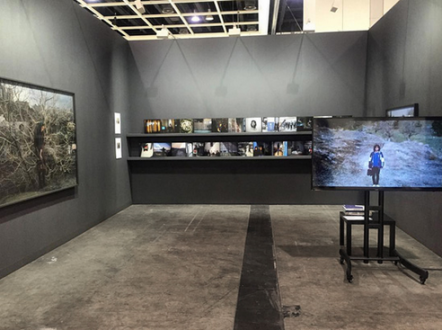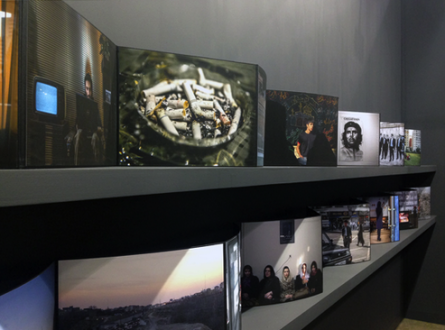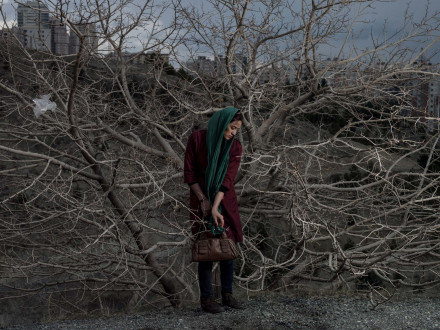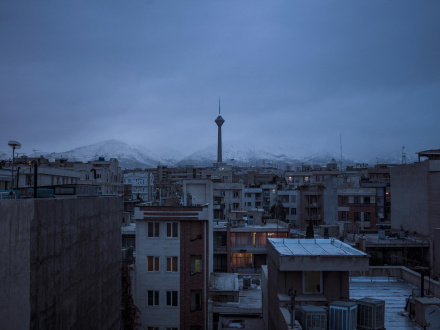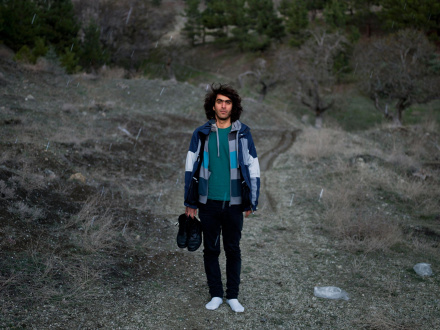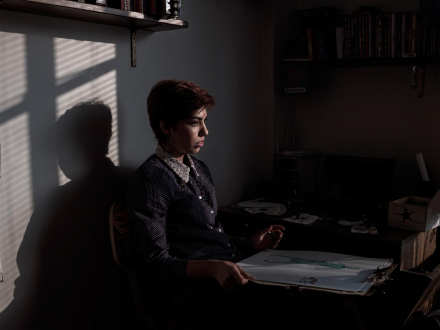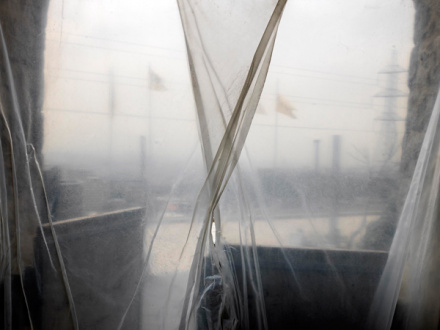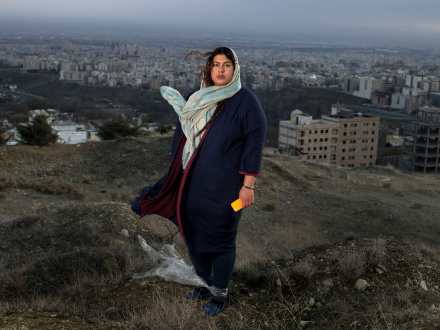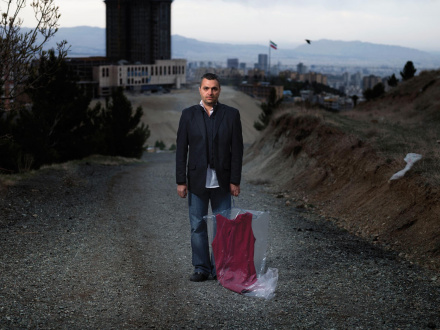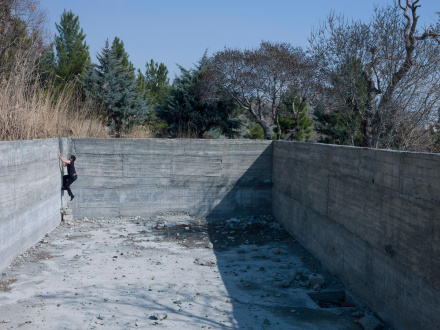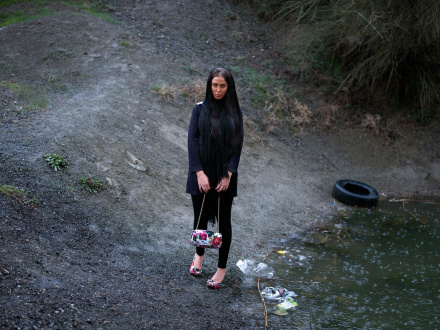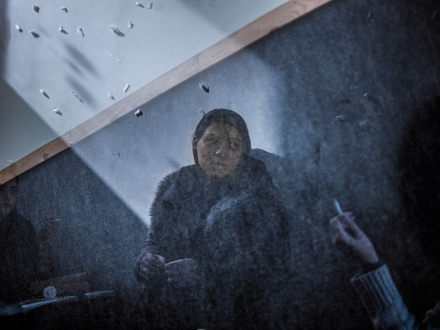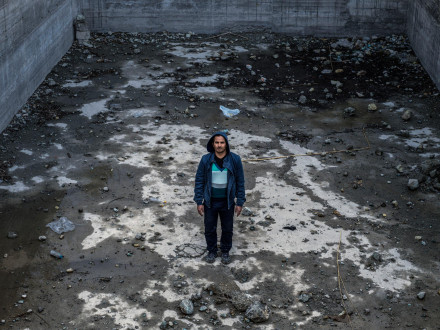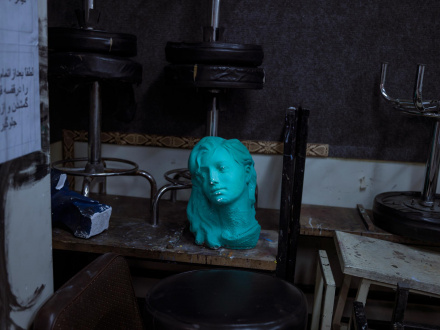Newsha Tavakolian Art Basel Hong Kong (Works)
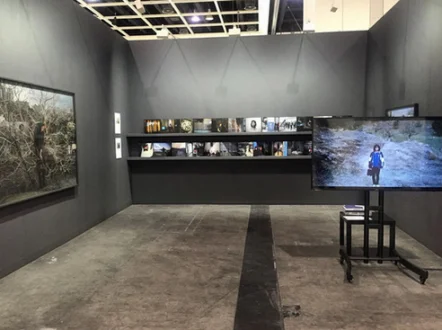 Blank Pages of an Iranian Photo Album, 2016, Art Basel Hong Kong.">
Blank Pages of an Iranian Photo Album, 2016, Art Basel Hong Kong.">
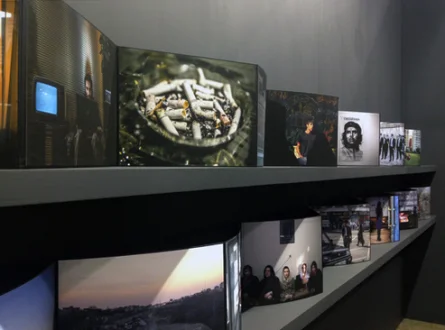 Blank Pages of an Iranian Photo Album, Art Basel Hong Kong, 2016.">
Blank Pages of an Iranian Photo Album, Art Basel Hong Kong, 2016.">
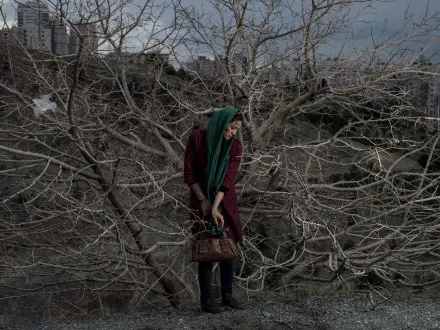 Portrait of Somayeh, Blank Pages of an Iranian Photo Album, 2014-2015, Tehran, Iran. Edition of 7 + 2 AP, Inkjet print on Epson Hot Press paper, 135 x 180 cm.">
Portrait of Somayeh, Blank Pages of an Iranian Photo Album, 2014-2015, Tehran, Iran. Edition of 7 + 2 AP, Inkjet print on Epson Hot Press paper, 135 x 180 cm.">
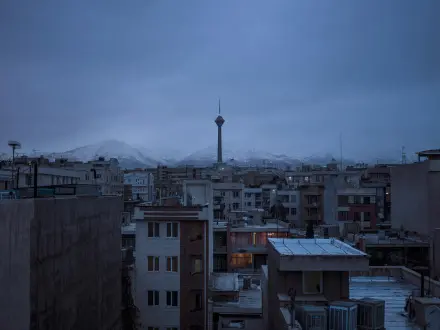 Blank Pages of an Iranian Photo Album, 2014 - 2015, Archival inkjet print, 43 1/4 x 57 7/8 in, edition of 7 + 2 AP.">
Blank Pages of an Iranian Photo Album, 2014 - 2015, Archival inkjet print, 43 1/4 x 57 7/8 in, edition of 7 + 2 AP.">
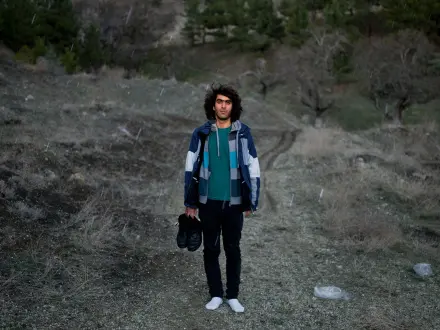 Portrait of Mehdi. Blank Pages of an Iranian Photo Album, 2014-2015, Tehran, Iran, 106 x 141 cm.">
Portrait of Mehdi. Blank Pages of an Iranian Photo Album, 2014-2015, Tehran, Iran, 106 x 141 cm.">
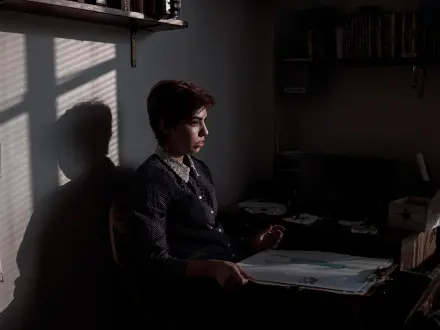 Blank Pages of an Iranian Photo Album, 2014 - 2015, Archival inkjet print, 43 1/4 x 57 7/8 in, edition of 7 + 2 AP.">
Blank Pages of an Iranian Photo Album, 2014 - 2015, Archival inkjet print, 43 1/4 x 57 7/8 in, edition of 7 + 2 AP.">
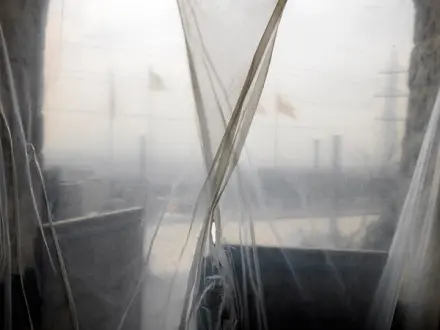 Blank Pages of an Iranian Photo Album, 2014 - 2015, Archival inkjet print, 43 1/4 x 57 7/8 in, edition of 7 + 2 AP.">
Blank Pages of an Iranian Photo Album, 2014 - 2015, Archival inkjet print, 43 1/4 x 57 7/8 in, edition of 7 + 2 AP.">
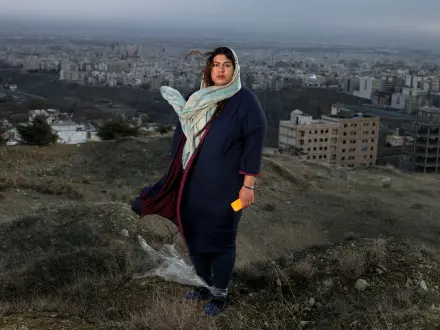 Portrait of Pani / Blank Pages of an Iranian Photo Album, 2014 - 2015, Archival inkjet print, 43 1/4 x 57 7/8 in, edition of 7 + 2 AP.">
Portrait of Pani / Blank Pages of an Iranian Photo Album, 2014 - 2015, Archival inkjet print, 43 1/4 x 57 7/8 in, edition of 7 + 2 AP.">
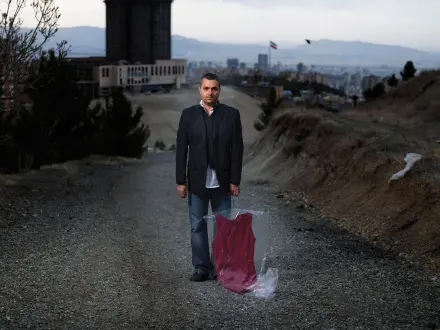 Portrait of Sami / Blank Pages of an Iranian Photo Album, 2014 - 2015, Archival inkjet print, 43 1/4 x 57 7/8 in, edition of 7 + 2 AP.">
Portrait of Sami / Blank Pages of an Iranian Photo Album, 2014 - 2015, Archival inkjet print, 43 1/4 x 57 7/8 in, edition of 7 + 2 AP.">
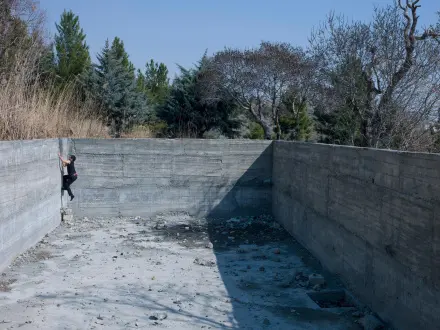 Mahud / Blank Pages of an Iranian Photo Album, 2014 - 2015, Archival inkjet print, 43 1/4 x 57 7/8 in, edition of 7 + 2 AP.">
Mahud / Blank Pages of an Iranian Photo Album, 2014 - 2015, Archival inkjet print, 43 1/4 x 57 7/8 in, edition of 7 + 2 AP.">
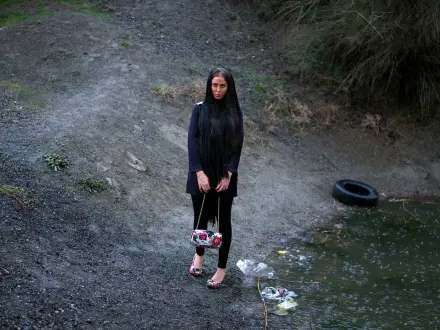 Portrait of Bita / Blank Pages of an Iranian Photo Album, 2014 - 2015, Archival inkjet print, 43 1/4 x 57 7/8 in, edition of 7 + 2 AP.">
Portrait of Bita / Blank Pages of an Iranian Photo Album, 2014 - 2015, Archival inkjet print, 43 1/4 x 57 7/8 in, edition of 7 + 2 AP.">
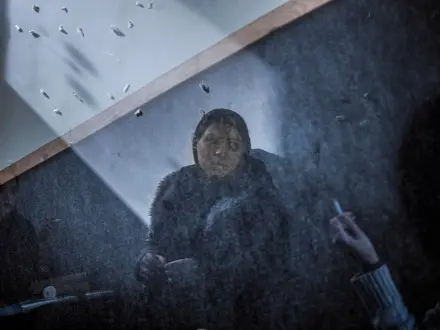 Blank Pages of an Iranian Photo Album, 2014 - 2015, Archival inkjet print, 43 1/4 x 57 7/8 in, edition of 7 + 2 AP.">
Blank Pages of an Iranian Photo Album, 2014 - 2015, Archival inkjet print, 43 1/4 x 57 7/8 in, edition of 7 + 2 AP.">
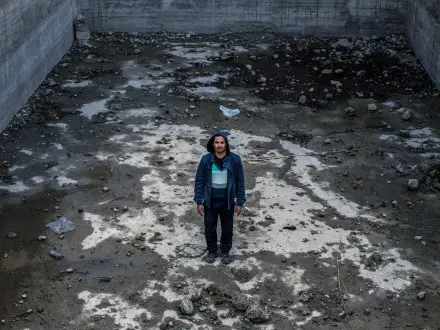 Portrait of Mahud / Blank Pages of an Iranian Photo Album, 2014 - 2015, Archival inkjet print, 43 1/4 x 57 7/8 in, edition of 7 + 2 AP">
Portrait of Mahud / Blank Pages of an Iranian Photo Album, 2014 - 2015, Archival inkjet print, 43 1/4 x 57 7/8 in, edition of 7 + 2 AP">
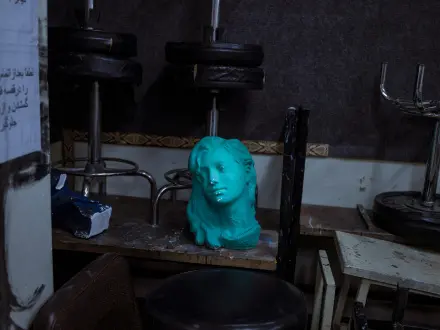 Blank Pages of an Iranian Photo Album, 2014 - 2015, Archival inkjet print, 43 1/4 x 57 7/8 in, edition of 7 + 2 AP.">
Blank Pages of an Iranian Photo Album, 2014 - 2015, Archival inkjet print, 43 1/4 x 57 7/8 in, edition of 7 + 2 AP.">
Selected Works
Newsha Tavakolian
Newsha Tavakolian Art Basel Hong Kong Press Release
Newsha Tavakolian
Blank Pages of an Iranian Photo Album
Art Basel Hong Kong
March 24 – 26, 2016
Thomas Erben Gallery is pleased to present Blank Pages of an Iranian Photo Album, a series of photographs by Tehran-based artist and photojournalist Newsha Tavakolian. The selected works, to be exhibited as part of our second participation in Art Basel Hong Kong, are drawn from a larger eponymous series for which Tavakolian was named the fifth laureate of the Carmignac Award (2014), and which was exhibited when she received the Prince Claus Award (2015). The continued refinement of Tavakolian’s artistic practice is reflected in these images, where the divergent traditions of street photography, reportage, and editorial photography are balanced through formally masterful compositions.
For Blank Pages of an Iranian Photo Album, Tavakolian began by collecting childhood snapshots from her friends and neighbors’ family albums. Often the conditions of contemporary Iranian life prevent these albums from being maintained. New photographs cease to be added at a certain point in adolescence, leaving blank pages despite the importance of these collections. To update these familial and generational histories, Tavakolian undertook this project, working in collaboration with her subjects to produce new photographs, with locations emblematic of their identities and desires. Whereas the extremes of Iran have been the most visible – the protestors, the women hidden behind veils – Tavakolian’s body of work continues to present her subjects neither as the propagandistic representations of the Iranian state, nor as the exoticized and repressed figures imagined by Western media. As such, her works resist portraying her subjects as prototypical “Iranians,” and replacing the blank pages at the end of an album becomes a means of resisting politicized representation.
In the image Mahud, the subject is seen only from a distance, frozen as he climbs out of an empty structure. The work’s full caption furthers Tavakolian’s investment in human experience, reading: “Mahud, climbing the wall of the abandoned empty swimming pool, which is the only quiet place he can find to practice singing.” Set within the subtly varied hues of the concrete and the trees, Mahud’s figure is marked by the burst of his strikingly red underwear. The image excels because of this nuanced flash of color, which reoccurs in other works in the accents of hair, nails, clothing, and other unexpected accessories. The delicately staged composition is organized around absence, which enables Tavakolian to move beyond the descriptive function of photojournalism and serve an effective and visually stunning end.
While Tavakolian’s works are primarily portraits, the individuals are placed within settings that incorporate elements of Iran’s political context. In several of the images, the person is depicted standing in the foreground, staring into the camera. They appear self-assured, holding various handbags, shoes, and other clothing. Yet behind them, a landscape strewn with decaying infrastructure and trash recedes into the distance, out of focus. It is within these landscapes that do not belong to her subjects, nor to the image that her country wishes to project, that Tavakolian has pioneered a middle-ground of visual resistance for her generation.
